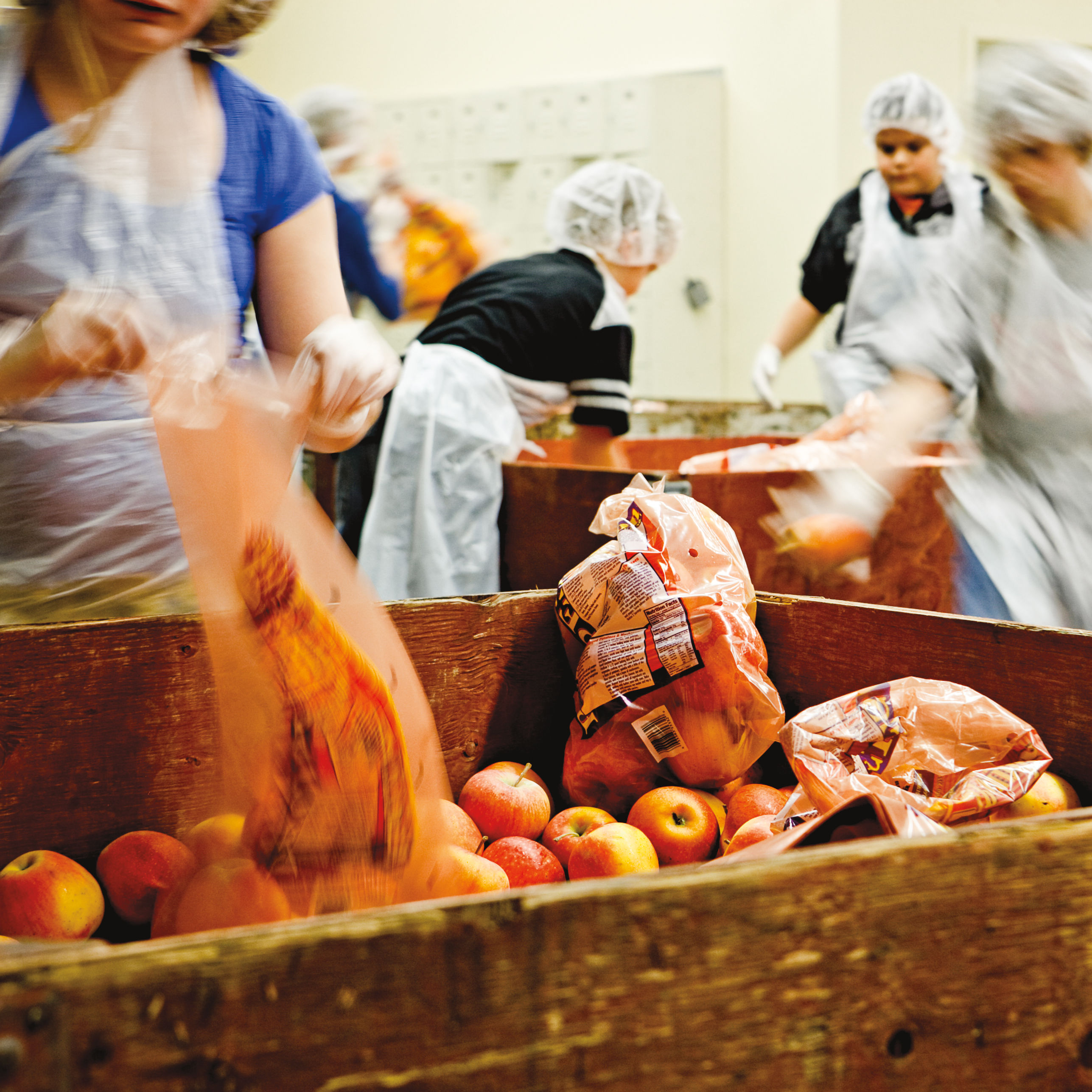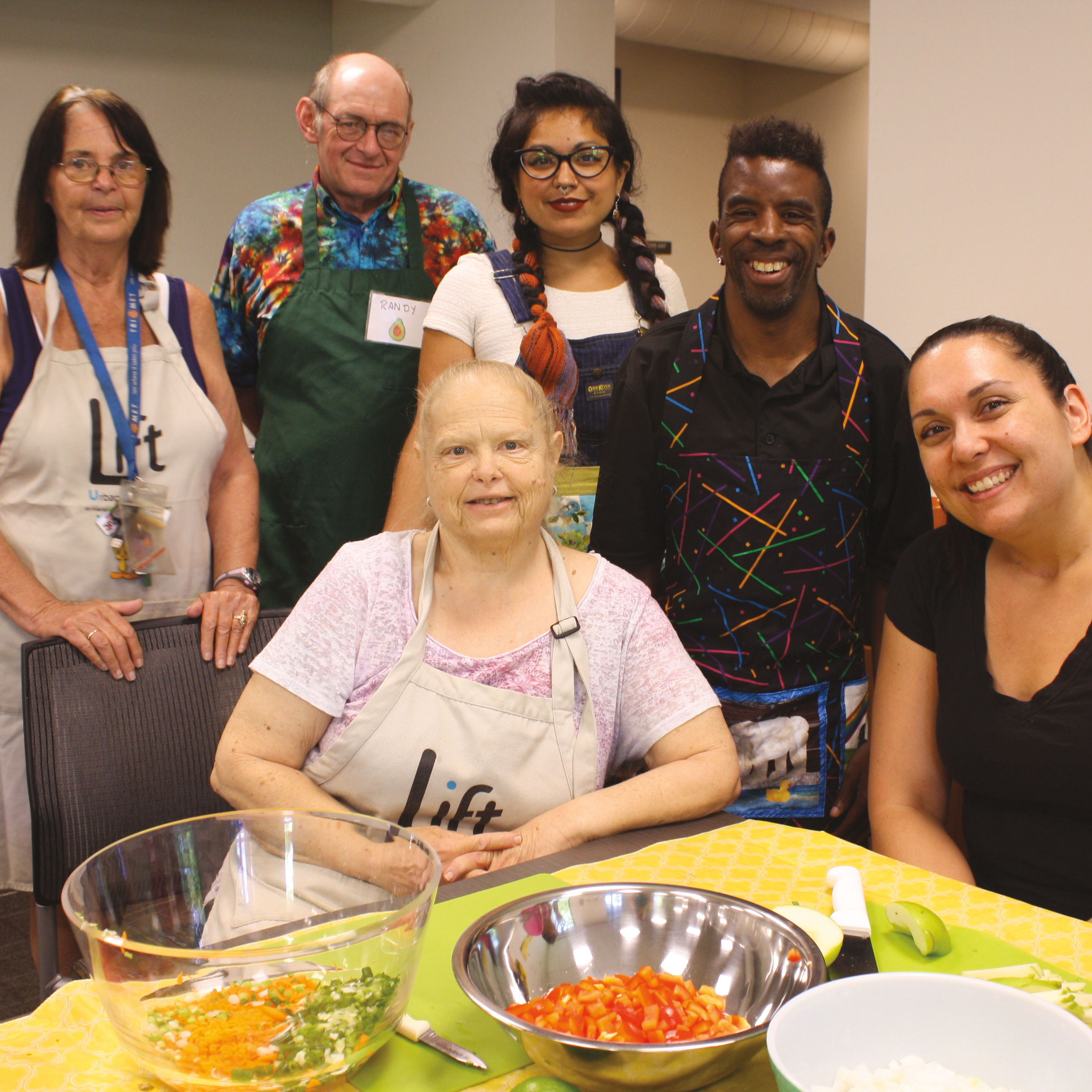
What Happens When Portland Kids Go Hungry?
Oregon has one of the highest levels of food insecurity in the country. A sixth of the state’s households don’t always know where their next meal will come from. What’s going on?
Part 1: Schoolkids
Kayla’s Breakfast
At home: toast (Salvation Army) with peanut butter (PTA Food Pantry), cereal (PTA food pantry). At school: Free breakfast provided by Portland Public Schools.
Kayla* is in fifth grade at Boise-Eliot/Humboldt, a neighborhood school in a rapidly gentrifying pocket of North Portland. She and her younger brother are among the estimated 210,000 children in Oregon the US Department of Agriculture terms “food insecure,” meaning they have “limited or uncertain access” to enough food.
“Sometimes I don’t know where the next meal is coming from,” says Kayla’s mother. “It’s stressful. I make sure my kids eat before I do.”
Kayla’s mother says she relies heavily on the free lunches supplied through the school as part of the federal Community Eligibility Provision, which gives funding for schools to serve breakfast and lunch at no cost to all enrolled students based on the percentage from families enrolled in other programs, such as the Supplemental Nutrition Assistance Program (SNAP, often referred to as food stamps) and Temporary Assistance for Needy Families (TANF). These are the “free lunches” Education Secretary Betsy DeVos joked about soon after her appointment last year, a quip that has parents like Kayla’s mother worried they may be under threat. “I don’t know where I’d be without the lunch.”
It’s not just the lunch. Kayla also brings home a backpack full of nonperishable food from the school’s food pantry once a week, from a supply stocked by the school’s parent-teacher association and administered by the school counselor, Elizabeth Dawson.
“More and more counselors are doing social work,” says Dawson, as she shows me the tall, metal cupboards packed with cereal boxes, tuna fish cans, beans, soups, “anything that’s nonperishable to help them get through the weekend.” These two cupboards are the Boise-Eliot/Humboldt food pantry, and it’s fallen to Dawson to manage the distribution of their contents assembled by the volunteer-based parent-teacher association. “The PTA brings in supplies, and every Friday I call the kids down and we load up their backpacks,” says Dawson. There are, she estimates, around 35 kids who get their backpacks filled from this supply by Dawson and some community volunteers every Friday afternoon.
Those 35 backpacks are a small symptom of a vexing problem. Many Oregonians can’t get the food they need regularly—a hidden crisis that affects an estimated half million people in the state, even as the economy booms and our vaunted food culture soars. And while Oregon’s hunger problem pervades the state, public schools are where many of those hungry people show up, day after day. Portland Public Schools estimates that 37 percent of the kids in the district need some form of food assistance. Other metro-area districts have similar problems: Reynolds, David Douglas, and Clackamas feed some 19,000 kids free lunches every day. And by many measures, things are even worse in rural districts.
Dawson has gotten to know many affected families over her seven years at the school, and often reaches out to new ones. “When I call, I say this is a service we offer all our families so nobody has to feel singled out,” she says. If she doesn’t find the hungry kids through their parents, she often gets the information firsthand. “The kids will tell me: ‘We don’t have any food in the house.’”
Lunch
Pizza, a carton of 1 percent or chocolate milk, unlimited fruit and vegetables (provided by Portland Public Schools)
Oregon is hungry: currently ranked 13th in the country for food insecurity, and listed by the most recent USDA report as among the 15 states where food insecurity is higher than the national average. During the three-year period from 2013 to 2015, almost one in six Oregon households were food insecure. Households with children experience food insecurity at far higher rates than those without.
If you know Oregon for its farms, for its seafood, for its booming restaurant culture, this seems like it should not be possible.
“It’s certainly not because there’s a lack of food,” says Dr. Mark Edwards, a professor of sociology at Oregon State University’s School of Public Policy who has published extensively on the subject. “We do have plenty of bounty, but we have a few characteristics in our state that make us more vulnerable.”
Rent rises and seasonal unemployment are two that he points to that contribute to a problem that we cannot seem to solve. Last year, when liberal think tank Oregon Center for Public Policy crunched the numbers, it found that Oregon had experienced the biggest increase in food insecurity in the country from 2013 to 2015. Preliminary new figures show us clawing back some ground postrecession, but even if an improving economy has paused the growth in hunger here, Edwards warns against complacency. “I’m not optimistic that in the short term Oregon is going to dramatically reduce its food insecurity,” he says baldly. “On the other hand I would say I’m optimistic about Oregon’s will and capacity to try to help people that are food insecure.”
He points to the state’s hunger task force, of which he is a member—created by the legislature in 1989 to act as a resource within government and advocate for Oregonians who are hungry. That’s not to mention the myriad nonprofits and community endeavors that have sprung up statewide to address Oregon’s hunger problem.
But the problem persists, and most other states in this country are still doing better than we are at feeding their citizens. OCPP’s Janet Bauer sees Oregon’s “affordability problem” at the heart of the issue. “Other costs are fixed costs, such as rent and child care,” says Bauer. “Nutrition is something that households have more flexibility in. They can make choices, like buying poor-quality food or having lower calories in order to meet another basic need that would have catastrophic consequences if they didn’t. Like shelter.”
Dinner
Rice-A-Roni, Hamburger Helper (SNAP/PTA Food Pantry)
Kayla has a home, though not all her schoolmates do. And according to her mother, she’s thriving in school. Despite her family’s anxieties about feeding a family of four on the monthly $186 they receive in food stamps, she gets regular meals. The school sends home extra provisions on days leading up to long breaks, and in summer her mother brings the children to the park daily so they can avail themselves of the Portland Parks and Recreation Free Lunch + Play program. Her father collects bottles and cans in the mornings to get extra income for groceries. But Kayla’s mom is worried the free school meals are under threat and the rhetoric of the current administration scares her.
For now at least, she’s grateful that the school has her back. But it’s not always easy for schools to provide services for which they weren’t designed. “It’s our job to make sure our students are in the best space they can be in,” says Kaveh Pakseresht, Boise-Eliot/Humboldt’s assistant principal. “At the same time, it stretches resources.”
Pakseresht is adamant that the school will do whatever it can to ensure its students have the best shot at learning—and sometimes that means filling their bellies first. For his part, he always has a supply of jerky on hand to ensure a high-protein snack for students sent his way. “With the vast majority of them, if you can meet that need, they can shift their attention from their stomach to the teacher,” he says. “If we can meet that physiological need, we’ve seen better behavior, with kids more on task.”
Katharine Jeffcoat, a nutritionist at Portland Pediatric and Family Nutrition, says kids can’t learn when their nutritional needs aren’t being met. “When one is not getting enough food in the day, then the brain is hungry and it continuously thinks about food, and it’s harder to focus and concentrate,” she says.
It’s not just about the quantity of food, but the quality of the diet. “A high-processed-sugar meal will not stick with you very long,” says Jeffcoat. “It’ll make you more hungry in about two hours than you were before you ate it.”
Some schools in the Portland district get help to make fresh produce available to families. But many, like Boise-Eliot/Humboldt, run up against staffing and logistical obstacles. “Right now it’s a lot of our teachers spending extra time on this,” says Pakseresht. “Their priority is the kids’ education, but they’re putting in extra time to try and organize this, and it can’t be done the way it should be done without someone who can actually dedicate their time fully to staffing and reaching out to families.”
Even schools with free breakfasts and lunches face other hurdles: how do kids dealing with homelessness, who may have long distances to travel and are late to school, get breakfast? How do you make sure they make healthy lunch choices? Are any of these part of a teacher’s job description? “Schools that have a higher percentage of kids who are deemed in poverty are going to get more resources for their building,” say Pakseresht. “But where do those resources go? Typically we need them in the classrooms, because students are going to need those resources to be present.”
He’s grateful for the PTA and the groundswell of support from local businesses—New Seasons, Grand Central Bakery, and others have donated to the school on a regular basis—but to get the food provided into the hands of families in need is another matter. “It’s the manpower. Who’s going to pick it up, who’s going to distribute it, who’s going to communicate with parents, who’s going to make sure the backpacks are getting to and from the families?”
Kayla’s mom says the backpack program has been a lifeline for her family. “I don’t know what we’d do if we didn’t have it,” she says. Oregon’s hunger stats might be moving in the right direction, but individual families are another matter. “We do struggle,” says her mom. “Everything’s going up in costs. It’s gotten harder with the government changing.” Things used to be easier, she says. “We were able to breathe, you know?”
Portland Monthly will examine hunger in Oregon in our March, April, and May issues. Want to help local organizations feed Portlanders? Go here.










